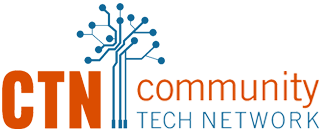For many of us, talking about the work Community Technology Network (CTN) does can be rather tricky. Part of the problem is that the term digital divide has meant different things to different people at different times. Depending on the context, people have used it when talking about
- Not having access to computers (or devices)
- Not having access to the Internet
- Not having the skill to use computers, devices, software, or Internet-based tools
- Not buying products or services
- Not having access to employment opportunities
The truth is that the digital divide encompasses all these things, but it also includes issues that are far more complex and difficult to work with. If someone doesn’t have a computer, getting them one is becoming easier and cheaper. Teaching them how to turn it on, how to open a browser, and how to navigate a to a website is becoming easier.
What’s more complex is trying to integrate them into the digital culture. In a recent article on DigtalLearn, Jim Tobias lays out part of that picture really well. Part of digital literacy is in helping people understand the “why” of technology, specifically how it is relevant to their day-to-day lives. For many of the people CTN serves, the work we do is as much about understanding what issues they face in their analog lives and try to help them find a way to use digital tools to help with those issues. Once you give them a way in, like most people, they’ll work hard to learn.
We often forget, though, that there is another side to the digital divide, that side being the builders and active users of technology. Tobias talks about the “laggards” who don’t adopt technology and urges us to understand the constellation of reasons that make them reluctant to use technology. In many cases, the users and creators of technology are building tools that completely ignore huge sections of the population. Part of the bridging the digital divide includes educating the makers of technology to include those populations when they’re thinking about building their tools. NPR has a great article that talks about a company that’s doing just that.


Comments are closed.